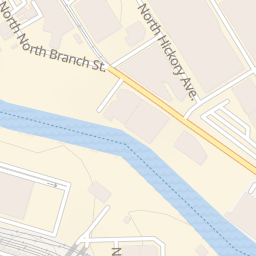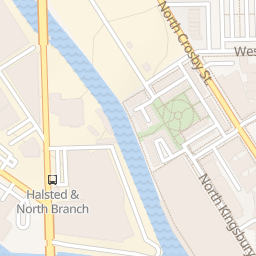Ryan Truby Phones & Addresses
-
Chicago, IL
-
Somerville, MA
-
Boston, MA
-
60 Crescent St, Cambridge, MA 02138
-
Odessa, TX
-
Austin, TX
Publications
Us Patents
Printed Stretchable Strain Sensor
View pageUS Patent:
20190094089, Mar 28, 2019
Filed:
Oct 11, 2018
Appl. No.:
16/157586
Inventors:
- Cambridge MA, US
Joseph T. Muth - North Plains OR, US
Daniel M. Vogt - Cambridge MA, US
Ryan L. Truby - Boston MA, US
Yigit Menguc - Somerville MA, US
David B. Kolesky - Cambridge MA, US
Robert J. Wood - Cambridge MA, US
Joseph T. Muth - North Plains OR, US
Daniel M. Vogt - Cambridge MA, US
Ryan L. Truby - Boston MA, US
Yigit Menguc - Somerville MA, US
David B. Kolesky - Cambridge MA, US
Robert J. Wood - Cambridge MA, US
Assignee:
President and Fellows of Harvard College - Cambridge MA
International Classification:
G01L 1/22
G01L 1/18
G01L 1/20
G06F 3/01
G01L 1/18
G01L 1/20
G06F 3/01
Abstract:
A printed stretchable strain sensor comprises a seamless elastomeric body and a strain-sensitive conductive structure embedded in the seamless elastomeric body. The strain-sensitive conductive structure comprises one or more conductive filaments arranged in a continuous pattern. A method of printing a stretchable strain sensor comprises depositing one or more conductive filaments in a predetermined continuous pattern into or onto a support matrix. After the depositing, the support matrix is cured to embed a strain-sensitive conductive structure in a seamless elastomeric body.
Method Of Printing A Tissue Construct With Embedded Vasculature
View pageUS Patent:
20190022283, Jan 24, 2019
Filed:
Sep 26, 2018
Appl. No.:
16/143050
Inventors:
- Cambridge MA, US
David B. KOLESKY - Cambridge MA, US
Kimberly A. HOMAN - Somerville MA, US
Ryan L. TRUBY - Boston MA, US
Amelia Sydney GLADMAN - Cambridge MA, US
David B. KOLESKY - Cambridge MA, US
Kimberly A. HOMAN - Somerville MA, US
Ryan L. TRUBY - Boston MA, US
Amelia Sydney GLADMAN - Cambridge MA, US
Assignee:
President and Fellows of Harvard College - Cambridge MA
International Classification:
A61L 27/50
A61L 27/22
B33Y 80/00
B29C 64/40
A61L 27/38
A61L 27/36
B33Y 10/00
A61F 2/10
A61F 2/06
B29C 64/106
C12M 1/26
A61L 27/22
B33Y 80/00
B29C 64/40
A61L 27/38
A61L 27/36
B33Y 10/00
A61F 2/10
A61F 2/06
B29C 64/106
C12M 1/26
Abstract:
A printed tissue construct comprises one or more tissue patterns, where each tissue pattern comprises a plurality of viable cells of one or more predetermined cell types. A network of vascular channels interpenetrates the one or more tissue patterns. An extracellular matrix composition at least partially surrounds the one or more tissue patterns and the network of vascular channels. A method of printing a tissue construct with embedded vasculature comprises depositing one or more cell-laden filaments, each comprising a plurality of viable cells, on a substrate to form one or more tissue patterns. Each of the one or more tissue patterns comprises one or more predetermined cell types. One or more sacrificial filaments, each comprising a fugitive ink, are deposited on the substrate to form a vascular pattern interpenetrating the one or more tissue patterns. The vascular pattern and the one or more tissue patterns are at least partially surrounded with an extracellular matrix composition. The fugitive ink is then removed to create vascular channels in the extracellular matrix composition, thereby forming an interpenetrating vascular network in a tissue construct.
Tubular Tissue Construct And A Method Of Printing
View pageUS Patent:
20180110901, Apr 26, 2018
Filed:
May 4, 2016
Appl. No.:
15/567570
Inventors:
- Cambridge MA, US
Kimberly A. Homan - Somerville MA, US
David B. Kolesky - Cambridge MA, US
Ryan L. Truby - Boston MA, US
Kimberly A. Homan - Somerville MA, US
David B. Kolesky - Cambridge MA, US
Ryan L. Truby - Boston MA, US
Assignee:
President and Fellows of Harvard College - Cambridge MA
International Classification:
A61L 27/38
A61L 27/56
A61L 27/36
A61L 27/18
B33Y 10/00
B33Y 80/00
B29C 64/106
A61L 27/56
A61L 27/36
A61L 27/18
B33Y 10/00
B33Y 80/00
B29C 64/106
Abstract:
A 3D printed tubular construct, such as a nephron, with or without embedded vasculature as well as methods of printing tubular tissue constructs are described.
Method Of Printing A Tissue Construct With Embedded Vasculature
View pageUS Patent:
20160287756, Oct 6, 2016
Filed:
Nov 4, 2014
Appl. No.:
15/146613
Inventors:
- Cambridge MA, US
David B. Kolesky - Cambridge MA, US
Kimberly A. Homan - Somerville MA, US
Ryan L. Truby - Boston MA, US
Amelia Sydney Gladman - Cambridge MA, US
David B. Kolesky - Cambridge MA, US
Kimberly A. Homan - Somerville MA, US
Ryan L. Truby - Boston MA, US
Amelia Sydney Gladman - Cambridge MA, US
Assignee:
President and Fellows of Harvard College - Cambridge MA
International Classification:
A61L 27/50
A61L 27/22
A61F 2/06
B29C 67/00
B33Y 10/00
B33Y 80/00
A61L 27/38
A61L 27/36
A61L 27/22
A61F 2/06
B29C 67/00
B33Y 10/00
B33Y 80/00
A61L 27/38
A61L 27/36
Abstract:
A printed tissue construct comprises one or more tissue patterns, where each tissue pattern comprises a plurality of viable cells of one or more predetermined cell types. A network of vascular channels interpenetrates the one or more tissue patterns. An extracellular matrix composition at least partially surrounds the one or more tissue patterns and the network of vascular channels. A method of printing a tissue construct with embedded vasculature comprises depositing one or more cell-laden filaments, each comprising a plurality of viable cells, on a substrate to form one or more tissue patterns. Each of the one or more tissue patterns comprises one or more predetermined cell types. One or more sacrificial filaments, each comprising a fugitive ink, are deposited on the substrate to form a vascular pattern interpenetrating the one or more tissue patterns. The vascular pattern and the one or more tissue patterns are at least partially surrounded with an extracellular matrix composition. The fugitive ink is then removed to create vascular channels in the extracellular matrix composition, thereby forming an interpenetrating vascular network in a tissue construct.
Printed Stretchable Strain Sensor
View pageUS Patent:
20160290880, Oct 6, 2016
Filed:
Nov 17, 2014
Appl. No.:
15/036937
Inventors:
- Cambridge MA, US
Joseph T. Muth - Somerville MA, US
Daniel M. Vogt - Cambridge MA, US
Ryan L. Truby - Boston MA, US
Yigit Menguc - Somerville MA, US
David B. Kolesky - Cambridge MA, US
Robert J. Wood - Cambridge MA, US
Joseph T. Muth - Somerville MA, US
Daniel M. Vogt - Cambridge MA, US
Ryan L. Truby - Boston MA, US
Yigit Menguc - Somerville MA, US
David B. Kolesky - Cambridge MA, US
Robert J. Wood - Cambridge MA, US
Assignee:
President and Fellows of Harvard College - Cambridge MA
International Classification:
G01L 1/22
Abstract:
A printed stretchable strain sensor comprises a seamless elastomeric body and a strain-sensitive conductive structure embedded in the seamless elastomeric body. The strain-sensitive conductive structure comprises one or more conductive filaments arranged in a continuous pattern. A method of printing a stretchable strain sensor comprises depositing one or more conductive filaments in a predetermined continuous pattern into or onto a support matrix. After the depositing, the support matrix is cured to embed a strain-sensitive conductive structure in a seamless elastomeric body.






